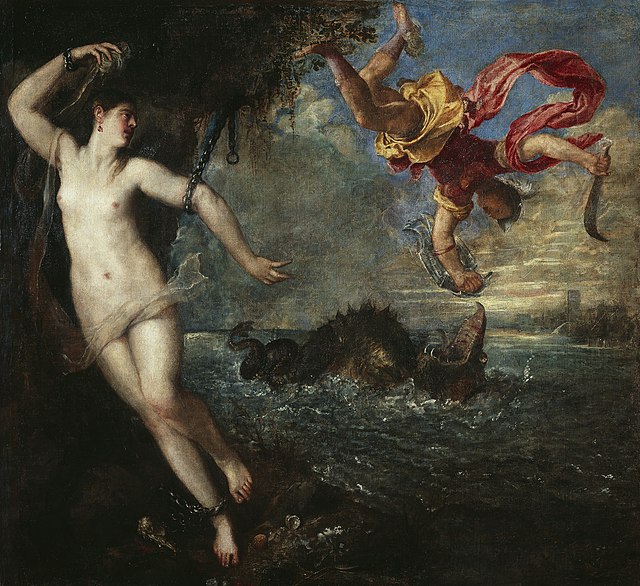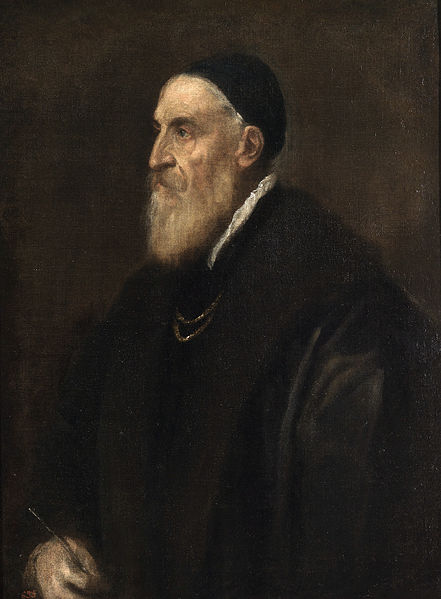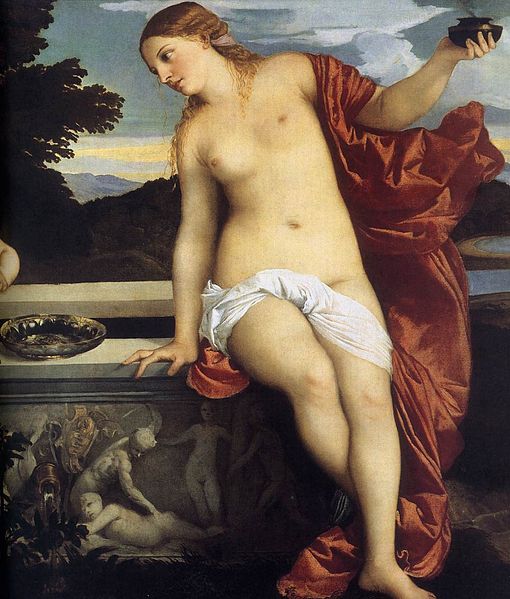Perseus and Andromeda (Titian)
Perseus and Andromeda is a painting by the Italian Renaissance artist Titian, now in the Wallace Collection in London. It was painted in 1554–1556 as part of a series of mythological paintings called "poesie" ("poetry") intended for King Philip II of Spain. The paintings took subjects from the Roman poet Ovid's Metamorphoses, in this case Book IV, lines 663–752, and all featured female nudes.
Perseus and Andromeda
Perseus Freeing Andromeda by Piero di Cosimo, c. 1510, one of the few earlier easel paintings of the topic Uffizi
Copy in the British Museum of the drawing by Anthony van Dyck from his Italian sketchbook, now at Chatsworth House, perhaps after a drawing by Titian.
The painting by Paolo Veronese now in Rennes, 1576–1578, which is similar to the Titian when reversed
Tiziano Vecelli or Vecellio, Latinized as Titianus, hence known in English as Titian, was an Italian (Venetian) Renaissance painter of Lombard origin, considered the most important member of the 16th-century Venetian school. He was born in Pieve di Cadore, near Belluno. During his lifetime he was often called da Cadore, 'from Cadore', taken from his native region.
Self-Portrait, c. 1567, now housed in Museo del Prado in Madrid
A Man with a Quilted Sleeve, c. 1509, National Gallery, London
Sacred and Profane Love,1514, Galleria Borghese, Rome
Allegory of Sacred Love (detail of Sacred and Profane Love)








